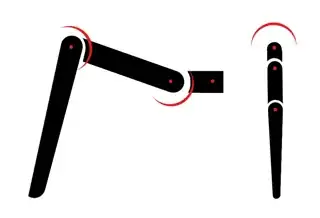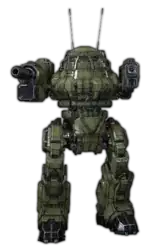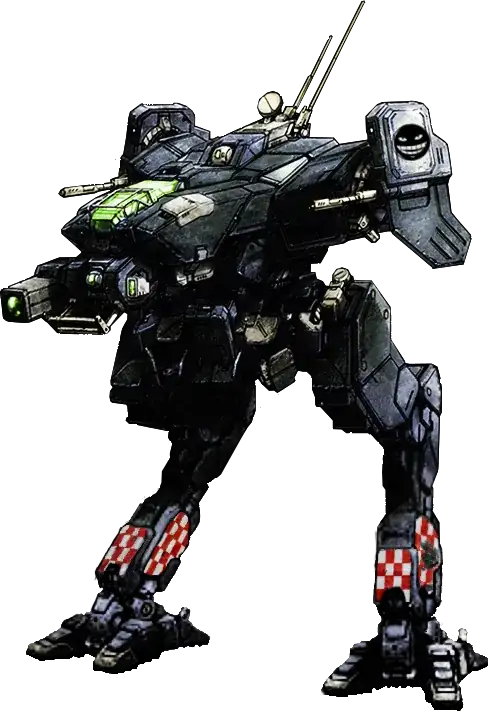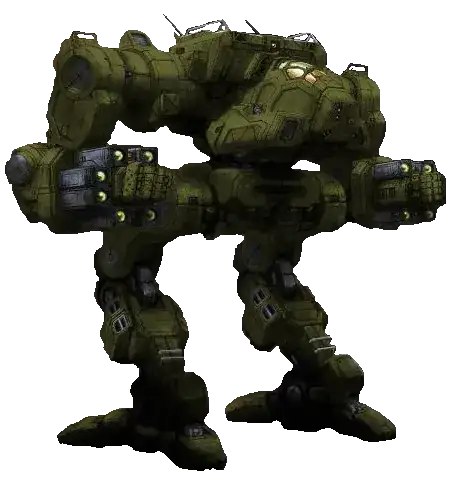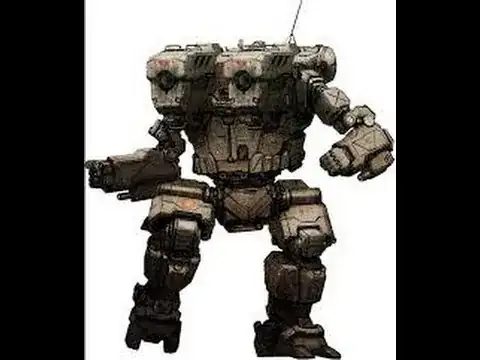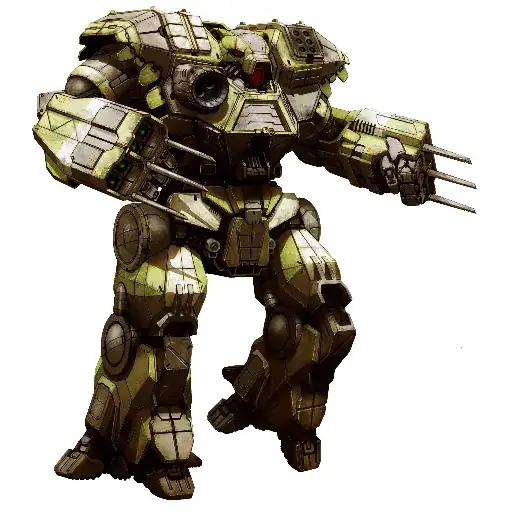I think some kind of mech is more likely in the near future than we might think. Two major advances will radically alter ground warfare in the near future. For the last century, offense or destructive weapons have been more powerful than defense weapons. That is about to change.
Body armor is already beginning to reverse the trend to lighter rifle rounds.
Since WWII the trend was smaller bullets, at higher velocities if possible, but always with the idea that a smaller bullet against human flesh was just as good as big round, especially if you put several close together.
But in the last 20 years, body armor has begun to reliably stop the most common round sizes, usually the 7.xmm rounds of common assault rifles. The US has brought back the venerable M14 (7.62×51mm) and even .50cal (12mm) Beowolf to augment the M4 (5.56×45mm)
An exo-skeletopn that let a soldier carry a hundred pounds of extra body armor would be immune to most light arms fire. This would set off an arms race between heavier but slower firing rifles trying to punch through ever increasing mechanized body armor.
Computer assisted aiming will also require body armor. Todays weapons are largely about "spray and pray" compared to automated targeting, because a human cannot spot a target, or part of a target, aim and fire before the target moves. Modern crewed, medium and "assault rifles" rely on the ability to put enough rounds into the air in a small unit of time that some will hit a target. Humans are just not fast enough to take aimed shots at other humans who can move just as fast to avoid exposing themselves to the shot.
But a computerized system move faster than humans. They see in "bullet time" in microseconds and human scale motion appears either nonexistant or takes the equivalent of hours.
There is a bullet stopping system used in VIP protection that detects incoming bullets by radar and fires a Kevlar air bag to popup and catch the bullet. That's how fast these systems work.
A human aimed gun would fire thousands of rounds across a field to try to hit some of the 50 opponents peaking out a trench 300m away. A computerized system would be able to carefully draw a bead on each individual fire one round into eye of each target. It would be the equivalent of firing rate of rotary mini-gun that targets like a sniper with all the time in the world.
With that kind of system your going to hit, so you have to absorb it with armor.
The historical analogy here would overhead airburst in WWI, leading to the return of the armored helment. The burst laid down such a pattern that almost everyone underneath got clipped. The only solution was to armor the head. This time will have to continue armoring everything, especially the face.
DEW (Directed Energy Weapons): These are getting scary good to the point they can incept artillery shells and either destroy them or knock them off course.
Very soon, military units will move under a line of sight dome of an intercept grid through which no projectile above a certain size,not moving at hypersonic speed, will survive.
Now, if you have a powerful DEW system, then crouching out of sight may not be as useful having elevated perspective to see incoming threats so the DEW can eliminate them. Besides, given modern battlefield sensing systems, hiding is becoming increasingly problematic. Instead, you'd want a tower, or tall vehicle to put your sensors and DEW projectors up high to give them most perspective and range.
Naturally, DEWs will become anti-personel weapons despite treaties. A thing that can hit a missile can hit a mobile human hundreds of times before they even begin to fall. Worse, they can hit individual parts of targets precisely as in eye,eye, trigger finger, weld the rifle receiver shut, then set of a grenade on the belt.
So, again, armor is the only solution.
Now, the nature of armor itself might change. It has to face two threats, kinetic weapons and DEWs. Kinetic weapons that move so fast they can penetrate the DEW grid are likely so high energy they can't really stopped, so they may not try. Such projectiles might have to be slender and solid so the best strategy might be to just let them punch though.
DEW weapons don't penetrate, stop them on the surface, absorb or deflect the plasma shock, and your good. Anti-DEW armor is not heavy or dense but focuses no deflecting energy and reflecting plasma from vaporized materials when the DEW hits. Such armors to date are more thick and fluffy than dense and heavy. Sometime a mist of water or certain liquid plastic prove very effective.
So, a tall, tank-analog DEW shielded mech might not be that heavy at all.
I could see a new future in which tall DEW projectors will be escorted by mech suited infantry wielding slow firing hyper velocity rifles and/or anti-personel lasers. The DEW stops airpower, arching artillery, slower missiles and RPG. The infantry will protect the DEW unit from someone running out a hiding spot and beat it to pieces with a crowbar.
Battles will beginning with low intensity DEW attacks in the thousands targeted at enemy sensor systems which will be constant, followed by precision attacks on vulnerable areas like joints or the unfortunate unarmored. The hypervelocity kinetic weapons will be shot at armored targets hoping their velocity will prevent the DEW grid from intercepting.
(Note that with hypervelocity weapons, hiding behind obstructions or even laying below the line of the ground won't provide much protection, as such weapons can punch through any building and dozens of meters of earth.)
This will not be any place for civilians. The sensor suppression will be blinding. Automatic DEW grids will likely target anything that moves. Even if not, mere reflected energy either from DEWs or shattered material from hypervelocity rounds will threaten all unarmored individuals.
Primary Defenses will BE
- Blind enemy senses and sensors with DEW, Jammers, decoys etc
- Damage or slow with precision DEW attacks against surface components
- Fire hyper velocity dumb projectiles at targets progressively shredding like cannon balls through age of sail wooden ships
- Try to intercept of deflect incoming enemy hyper-velocity projectiles.
On factor that will bring large vehicles, mech or not, is that the more powerful energy sources you can lug along the better your DEW defense and offense. It will become a race something like that in battleships from 1899-1936 where the biggest guns and armor won.
